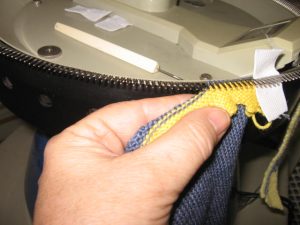Hand linking
The term hand linking indicates a phase of work in the textile world and is considered synonymous with high quality. This process is often used in the socks world to link the heel and the front part of the sock often called the “toe”.
The process of hand linking
Practically speaking, hand linking is the process used to attach the heel and the toe of the sock. It is very important not to overlap the fabric as this could cause irritation on the skin when worn. Likewise it is crucial not to make any holes in the fabric which could lead to laddering. A matter of fact only one missed stitch in this whole process can ruin the sock. At the end of the hand linking the result should be a completely seam free sock, in fact the appearance is that of a single piece.

The advantages
What are the great advantages of this long and delicate process? Certainly there is absolutely no possibility of any rubbing or irritation during use as there is in effect no join. The seamless linking and the high quality of the fabric ensures maximum comfort.
The added value
To teach an operator the complete process of hand linking you need many years; during this long apprenticeship period inevitably many pairs of socks will be ruined. Finally the production increases to 25/30 dozens a day; if we compare this final yield to the 120 dozens produced daily by simply machine sewing the seams you can see immediately why there is a difference in both quality and price between the hand linked and the machine stitched socks. As a result of this complicated process, the duration and the comfort of hand linked socks is highly superior , furthermore our socks have both the heel and the toe re-enforced in natural fibers.
More Info
